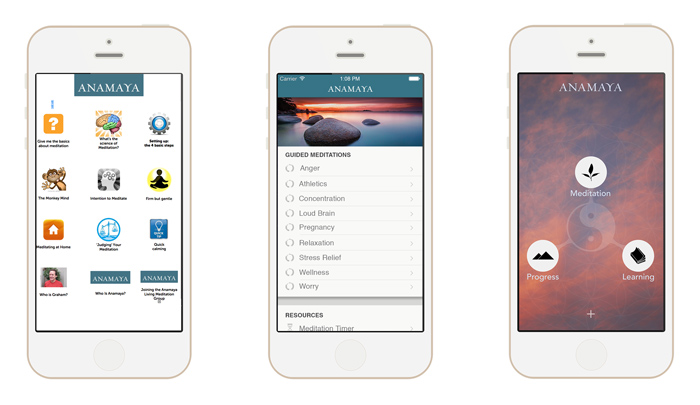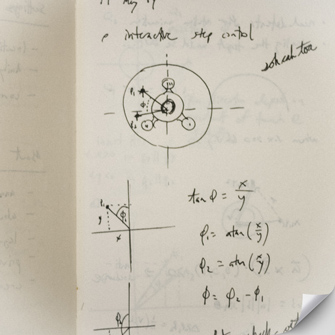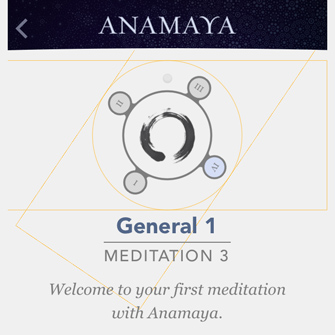Anamaya
Backstory
After traveling like a vagabond for about a year — and living without any sort of cell phone during that time — I decided to re-engage in some sort of creative endeavor using the technical skills I had developed at Apple.
In early 2014, I was introduced to Graham Doke, founder of the Anamaya center in London. He wanted to build a guided meditation app, structured as a meditation course. Since I was about 18 years old, I’d had an interest in Eastern philosophy, particularly Taoism and more recently Zen Buddhism and meditation. The idea of using mobile technology to create a serene experience conducive to meditation seemed like an attractive design challenge and a compelling reason to use a smart phone.
After ten years of working in a corporate environment, I was also intrigued by the possibility of working from home. As I found during the course of the project, you reclaim an extraordinary amount of time when you are not bound to the morning coffee, lunch, snack, meeting and afternoon coffee rituals common in office enviornments. It takes a lot of self-discipline but having a partner who is a hardcore Ashtanga yogi waking up at 5:30am helps.
The scope and feature set of the project expanded significantly from the original concept, and I found myself designing & developing the app while traveling around Europe. In what can only be called highly mobile development, various parts of Anamaya were built in Scotland, Italy, Poland, Germany, England, Portugal, and Croatia.
Concept Development
My initial pitch for a hierarchical navigation list of meditation focus areas was met with tactfully expressed feedback that it was “too corporate” and “a bit boring.” In response, I followed my personal interests in sacred geometry, photography and ambient music to create a design that was serene, fluid, and centering — with animated zoom transitions that kept the yin-yang (perhaps the world’s best symbolic representation of balance) at the center.

Anamaya concept evolution
The new design for the app would demand a number of custom elements — animated transitions, controls, layouts, in-app purchases — that drew on my previous experience with CoreGraphics, CoreAnimation and software architecture while also requiring the adoption of the cutting-edge Pop framework and other invaluable contributions from the wider software community.

early design sketches

step control in progress
Anamaya v1.0.8
In November 2014, Apple approved the app for release on the App Store, but the most challenging part of the project still lies ahead: spreading the word about the app and getting people interested in meditation. But that’s a pretty good mission to have.

artwork for App Store delivery